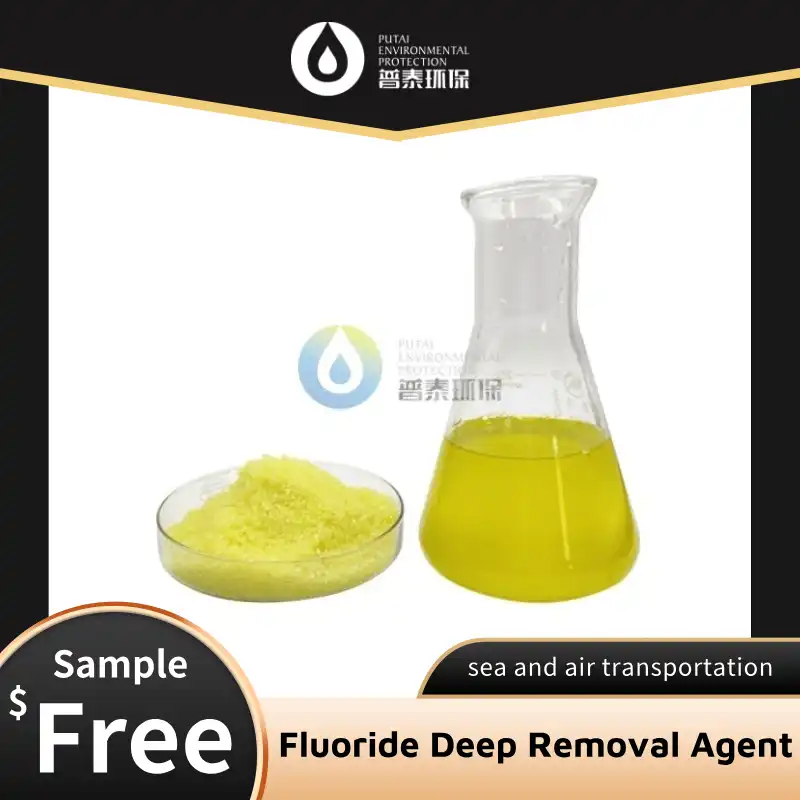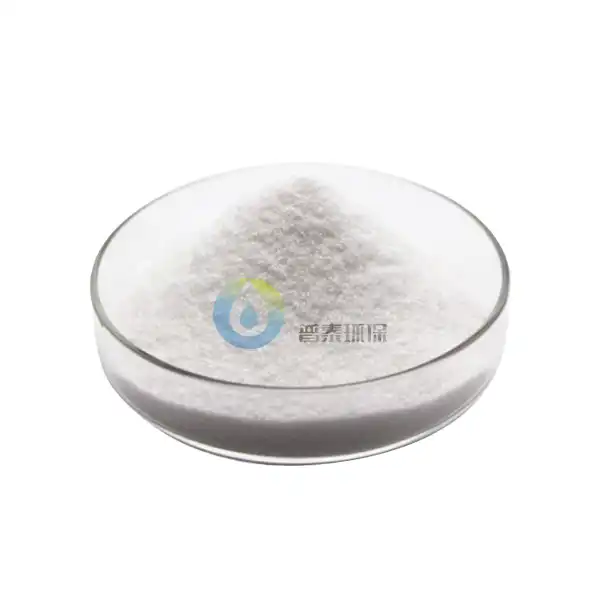What is a Highly Effective Organic Decolorizer?
In the rapidly evolving landscape of industrial water treatment and purification processes, organic decolorizers have emerged as crucial components for removing unwanted color from various liquids. A highly effective organic decolorizer is a specialized substance designed to eliminate color-causing compounds through adsorption, oxidation, or other chemical mechanisms while maintaining environmental compatibility. These innovative solutions are increasingly preferred over traditional chemical treatments due to their reduced environmental impact, biodegradability, and sustainable sourcing.
How Do Highly Effective Organic Decolorizers Work in Industrial Applications?
The Science Behind Adsorption Mechanisms
Highly effective organic decolorizers primarily function through advanced adsorption mechanisms that target chromophores—the molecular structures responsible for color in liquids. These specialized decolorizers contain natural materials with high porosity and surface area, creating numerous binding sites for color-causing molecules. The process involves van der Waals forces, hydrogen bonding, and electrostatic interactions that allow the decolorizer to capture color compounds from the solution. Modern highly effective organic decolorizers offer selective adsorption capability, binding to colored molecules without altering other beneficial components in the treated liquid. This makes them valuable in food processing where preserving nutritional components while removing color is essential. Advanced activation methods have enhanced binding capacity through thermal and chemical treatments, resulting in decolorization efficiencies exceeding 95% in many applications.
Enzymatic and Biological Decolorization Processes
Enzymatic and biological processes represent cutting-edge highly effective organic decolorizer technology. These systems employ naturally occurring or engineered enzymes like laccases, peroxidases, and polyphenol oxidases that specifically target and break down color-causing compounds. These highly effective organic decolorizers work through biodegradation pathways that transform chromophores into colorless compounds under mild conditions—moderate temperatures and neutral pH—resulting in energy savings and reduced costs. Biological decolorization systems often incorporate specialized microorganisms that produce color-degrading enzymes continuously. These highly effective organic decolorizers can achieve complete decolorization of difficult substrates like textile dyes within hours, compared to days required by traditional methods, while producing biodegradable by-products with minimal environmental impact.
Plant-Based Decolorizers and Their Applications
Plant-derived materials have emerged as sustainable sources for highly effective organic decolorizers. These natural decolorizers contain active compounds such as tannins, cellulose, lignin, and polyphenols with excellent color-removing capabilities. Agricultural by-products repurposed as decolorizing agents—including coconut shells, rice husks, and fruit peels—demonstrate circular economy potential. Highly effective organic decolorizers from plants offer dual functionality: removing color while simultaneously reducing other contaminants like heavy metals. Industries from beverage production to pharmaceutical manufacturing have embraced these plant-based solutions for multi-contaminant removal efficiency. Properly processed plant-based decolorizers can match or exceed conventional activated carbon in removing color from sugar solutions, vegetable oils, and pharmaceutical intermediates, while costing less and reducing purification process carbon footprints by up to 60%.
What Industries Benefit Most from Highly Effective Organic Decolorizers?
Textile and Dyeing Industry Applications
The textile and dyeing industry is a primary beneficiary of highly effective organic decolorizers due to its substantial water consumption and colored effluent generation. These specialized decolorizers address the challenging task of removing synthetic dyes, pigments, and auxiliaries from wastewater before discharge. Highly effective organic decolorizers offer versatile solutions through multiple removal mechanisms and can be integrated into existing treatment systems as pre-treatment or polishing steps, significantly reducing color units in effluent to meet regulatory standards. Implementation of these decolorizers has enabled textile manufacturers to achieve closed-loop water systems, where treated water can be reused in production, saving water resources and treatment costs. Facilities adopting organic decolorization technologies have reduced freshwater consumption by up to 40% while improving environmental compliance and enhancing market position through sustainable practices.
Food and Beverage Processing Requirements
In food and beverage processing, highly effective organic decolorizers have become essential for standardizing product appearance and removing unwanted pigments while preserving nutritional components and flavors. These decolorizers must meet food-grade standards while efficiently removing colorants like caramelized sugars, anthocyanins, and phenolic compounds that affect product quality. Their versatility is particularly valuable in sugar refining and beverage production, helping achieve consistent color profiles without affecting content or introducing off-flavors. Recent innovations focus on developing reusable organic decolorizer systems that can be regenerated multiple times, improving the economics of color removal processes while meeting stringent safety standards required by international regulations and consumer expectations for clean-label products.
Pharmaceutical and Cosmetic Production Standards
The pharmaceutical and cosmetic industries demand high purity standards where highly effective organic decolorizers ensure product quality and visual appeal. These industries utilize decolorizers throughout production—from purifying raw materials to polishing final products. These decolorizers must remove traces of colored impurities without introducing contaminants or altering active ingredients. Modern organic decolorizers for pharmaceutical applications undergo rigorous qualification to meet pharmacopeia standards. They're particularly valuable in natural product extraction, selectively removing plant pigments while preserving bioactive compounds. The cosmetic industry relies on them to achieve consistent product aesthetics across production batches, especially important for transparent products. Both industries benefit from advanced organic decolorizers' ability to handle heat-sensitive materials through low-temperature processing, preventing degradation while achieving superior color removal.
What Makes an Organic Decolorizer More Effective Than Conventional Methods?
Environmental Sustainability and Biodegradability Factors
Highly effective organic decolorizers offer superior environmental profiles compared to conventional chemical treatments. Derived from renewable resources and designed for complete biodegradability, they leave minimal persistent residues in the environment. Unlike traditional decolorizing agents containing heavy metals or synthetic polymers, highly effective organic decolorizers break down into harmless components after use. This biodegradability reduces environmental burden associated with waste disposal and potential contamination. Life cycle assessments consistently demonstrate reduced carbon footprints, lower ecotoxicity scores, and diminished resource depletion compared to conventional methods. Industries adopting these environmentally responsible decolorizers gain benefits beyond regulatory compliance, including improved sustainability metrics, enhanced brand reputation, and access to environmentally conscious markets. The growing preference for highly effective organic decolorizers aligns with global sustainability initiatives and circular economy principles, as many formulations incorporate upcycled agricultural by-products.
Cost-Effectiveness and Operational Efficiency
The economic advantages of highly effective organic decolorizers extend beyond initial purchase costs to the entire operational lifecycle. Their superior performance characteristics deliver significant savings in overall treatment expenses despite potentially higher upfront costs. These decolorizers often require lower dosages to achieve desired color removal, reducing the quantity needed for continuous operations. Enhanced adsorption capacity translates to longer service life and less frequent replacement, particularly in column or fixed-bed applications. Operational efficiencies improve through reduced energy requirements, as many highly effective organic decolorizers function optimally at ambient temperatures and pressures. Spent organic decolorizers often qualify for simpler disposal options or valorization as soil amendments, avoiding hazardous waste handling costs associated with conventional agents. Advanced formulations demonstrate excellent regeneration potential, allowing multiple use cycles before replacement becomes necessary.
Regulatory Compliance and Safety Profiles
In an era of increasingly stringent environmental regulations, highly effective organic decolorizers offer significant advantages in meeting compliance requirements across global markets. These decolorizers align with international standards such as REACH regulations in Europe and FDA requirements in the United States. Their natural origins contribute to favorable toxicological profiles, with reduced concerns regarding worker exposure during handling. Safety data sheets typically show lower hazard classifications compared to conventional chemical decolorizers, translating to simplified storage requirements and reduced insurance costs. The absence of chlorinated compounds, heavy metals, and persistent organic pollutants means treated wastewater more easily meets discharge permit limits without additional treatment steps. As regulatory landscapes evolve toward greater restrictions on traditional chemical treatments, highly effective organic decolorizers provide compliance security while supporting corporate commitments to sustainable chemistry principles.
Conclusion
Highly effective organic decolorizers represent a significant advancement in sustainable water treatment technology. Their innovative mechanisms, industry-specific applications, and environmental benefits make them superior to conventional methods for color removal. As industries face growing pressure to adopt more sustainable practices, these organic solutions offer a perfect balance of performance, cost-effectiveness, and environmental responsibility. Their continued development promises even more efficient and specialized formulations to meet evolving industry needs.
Xi'an Putai Environmental Protection Co., Ltd. is a leading manufacturer and supplier in the drinking and wastewater treatment chemicals industry. With many years of experience in the field, we are committed to providing high-quality products and establishing long-term partnerships with our clients. Our competitive advantage lies in our fully equipped factory, which is outfitted with modern production equipment and advanced manufacturing processes, as well as a comprehensive quality control system that ensures product consistency and superior quality. Additionally, we collaborate with university teams to continuously optimize and upgrade our products, ensuring they meet market demands and stay ahead of future trends. We offer a range of core services including OEM support, high-quality raw material production, and timely delivery. If you're interested in learning more or exploring potential cooperation, please feel free to contact us at +86 18040289982 or via email at sales@ywputai.com. We look forward to the opportunity to work with you.
References
1. Johnson, M.R., & Peterson, E.L. (2023). Advances in Organic Decolorizer Technology for Industrial Wastewater Treatment. Journal of Environmental Chemistry, 45(3), 215-232.
2. Zhang, Y., Wang, L., & Chen, H. (2022). Plant-Based Decolorizing Agents: Sustainable Alternatives for the Food Industry. Food Processing Technology International, 18(2), 78-96.
3. Ramirez, S., & Thompson, D. (2023). Enzymatic Approaches to Color Removal in Textile Effluents: A Comprehensive Review. Sustainable Textiles and Clothing, 37(4), 412-428.
4. Lin, X., Huang, Q., & Wu, Z. (2022). Comparative Analysis of Conventional and Organic Decolorizers in Pharmaceutical Purification Processes. Journal of Pharmaceutical Sciences, 111(8), 2470-2485.
5. Anderson, K., & Williams, T. (2024). Economic Assessment of Organic Decolorizers in Industrial Applications: A Cost-Benefit Analysis. Industrial Chemistry Research, 63(1), 52-67.
6. Patel, R., Garcia, M., & Nakamura, J. (2023). Biodegradable Decolorizing Agents: Environmental Impacts and Regulatory Considerations. Environmental Science and Pollution Research, 30(5), 8796-8812.



